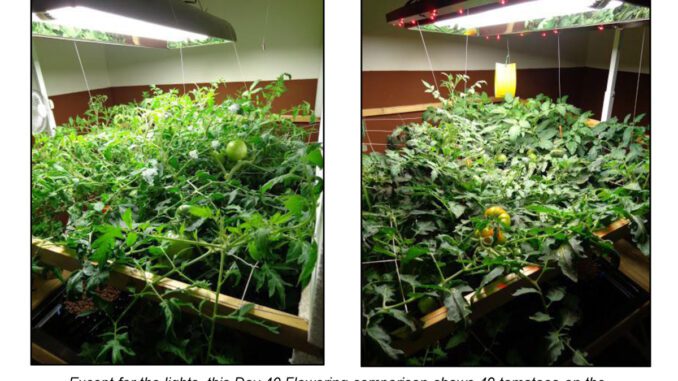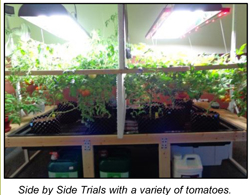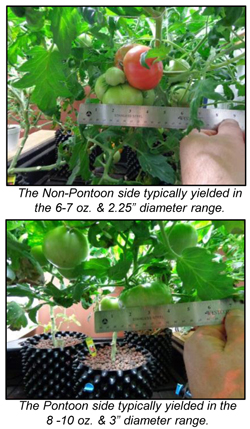

Be taught extra about how completely different mild wave lengths (spectrum) work on cultivating indoor and hydroponics crops with Far Crimson Develop Lighting and Plant Lighting Fundamentals
After the fundamentals, learn on to the actual world side-by-side research carried out by Inda-Gro utilizing their full spectrum Induction Develop Lights after which supplementing with Far Crimson Develop Lighting Wavelengths for stimulation of a deeper flowering response.
From WWW.INDA-GRO.COM
In nature it’s this Far Crimson 730nm wavelength that triggers the Phytochrome, or flowering response
Understanding PAR
Whereas a plant advantages to a small diploma with the sunshine wavelength or spectra that the attention see’s, vegetation reply finest to the Ultraviolet (UV) and Infrared (IR) areas of the spectrum. Nevertheless if the spectrum is narrowly or under no circumstances emitted by the lamp then the vegetation won’t develop to its fullest leafy vegative or cumbersome flowering levels that pure daylight would have meant. That’s the reason crops reply properly to far crimson develop lighting and plant lighting fundamentals.
Since mild performs such a important position in a vegetation profitable progress it’s necessary to have the right high quality and amount of sunshine obtainable to the plant because it wants it. Inadequate mild ranges will cut back a vegetation total weight and develop signs of stress, decreased nodule density and smaller leaves. Whereas an excessive amount of mild can harm the plant from extreme IR warmth radiation or excessive UV radiation.
Because it pertains to correct mild choice we’ll introduce you to the significance of two organic reactions that happen inside a plant; Photosynthesis and Photomorphogenesis
Vegetation take in mild by a inexperienced pigment throughout the plant often called chlorophyll. When chlorophyll absorbs mild and turns it into vitality it’s by a chemical course of throughout the plant referred to as Photosynthesis.
As Photosynthesis happens, the wavelength spectrum that’s most useful to plant progress is discovered inside sure areas between the 380-720 nanometer vary of the spectrum. The sunshine that’s inside this area is known as Photosynthetically Energetic Radiation (PAR).
A vegetation spectral lighting wants will change because it grows. Since spectrum performs an necessary half within the success of the vegetation progress developmental bioligists refer presence of those mild mediated adjustments that the plant absorbs by a wide range of Receptors as Photomorphogenesis.
As proven throughout the chart beneath, you possibly can see the typical PAR ranges for many vegetation that needs to be obtainable for optimum chlorophyll absorption. Inside these ranges vegetation will reply very properly to the emitted mild wavelengths.
| Nanometers | PAR Influences |
|---|---|
| 200 – 280 | UVC ultraviolet vary; extraordinarily poisonous to vegetation. |
| 280 – 315 | UVB ultraviolet mild; causes vegetation colours to fade. |
| 315 – 380 | UVA ultraviolet mild; is neither dangerous nor useful to plant progress. |
| 380 – 400 | Begin of seen mild spectrum. Chlorophyll Absorption begins. UV protected plastics ideally block out any mild beneath this vary. |
| 400 – 520 | This vary contains violet, blue, and inexperienced bands. Peak chlorophyll absorption influences photosynthesis. Most vital in selling vegetative progress. |
| 520 – 610 | This vary contains the inexperienced, yellow, and orange bands and has little absorption by receptors. |
| 610 – 720 | That is the Crimson band the place massive cases of chlorophyll absorption happen which promote flowering and budding. |
| 720 – 1000 | There may be little chlorophyll absorption on this vary. Flowering and germination are influenced on the excessive Far-Crimson finish as infrared warmth. |
| 1000+ | Completely infrared vary. All vitality absorbed at this level is transformed to warmth. |


Measuring Plant Lighting
We measure seen mild in Lumens, LUX, Lumens Per Watt or Footcandles however are these identical measurements additionally enough when measuring for a vegetation lighting ranges? No.
Whereas there’s nothing incorrect with understanding these measurements these should not the very best measurements to inform us what’s the finest lamp for the our vegetation total lighting wants.
A greater strategy to measure plant lighting is to find out how a lot vitality the lamp consumes and the way a lot mild really makes it to the plant surfaces the place each Photosynthesis and Photomorphogenesis happens.
When measuring mild QUANTITY for a plant we glance to measure what number of PHOTONS, (the minimal unit of vitality involving mild) are falling every second inside a sq. meter. Photons are such a small unit of measurement that they’re known as MICROMOLES OF PHOTONS or extra typically simply MICROMOLES to explain a measurement of what number of photons are arriving at a vegetation floor from the emitted mild supply. For reference 2000 micromoles can be a daylight degree measurement of sunshine.
Of most worth to the grower and his plant can be the variety of photons being measured on the plant, per second, per sq. meter, throughout the PAR ranges of 380-720 nanometers. This worth is then often called the PHOTOSYNTHETIC PHOTON FLUX (PPF) degree that the lamp emits.
Meters that measure these (PPF) values are sometimes called QUANTUM METERS since a quantum is the quantity of vitality carried by a photon. These meters will present complete spectrum measurements of the entire variety of photons per second values in addition to measure the YIELD PHOTON FLUX (YPF) of the lamp which is as we’ve seen by the vegetation photomorphogenis necessities will help the grower in figuring out that the lamp has the right PAR spectrum for optimum photosynthetic response at that stage of plant progress.
One other method growers prefer to measure mild for vegetation is by PAR WATTS. What this refers to is how a lot mild vitality is on the market between the 400-700 nanometer ranges that the plant requires for Photosynthesis. What’s extraordinarily necessary to know the effectivity of the lamp being thought-about. Growers needs to be cautious when contemplating these values and to not correlate larger PAR WATT values with extra profitable yields since with vitality environment friendly lighting reminiscent of induction the PAR Watts per Sq. foot could measure 70% lower than an HID and whereas nonetheless delivering micromoles in extra of the HID throughout the vegetation PPF and YPF necessities.


THE STUDY: What DOES Far-Crimson Gentle Do for Rising Crops?
Throughout Lights On Cycles: We run the Deep Crimson, 660nm diodes to fulfill an necessary Chlorophyll B peak absorption spectra for flowering thereby rising flowering websites. Strategically positioned diodes on 10⁰ planes enable for even cover protection and glorious penetration. That is achieved with out burning the cover from excessive depth diodes which can be often aimed straight down on the cover. Diodes are asymmetrically positioned to interlace mild distribution patterns with the opposing Pontoon and of any adjoining fixtures equally outfitted with Pontoons.
Throughout Lights Off Cycles: It’s midday on a cloudless day and the solar paints the sky a shiny Blue. Because the solar begins to set, the Blue is progressively changed by rising ranges of Crimson to Deep Crimson and eventually to Far Crimson. In nature it’s this Far Crimson 730nm wavelength that triggers the Phytochrome, or flowering response, to happen inside seconds of sensing that wavelength solely because the solar units over the horizon.
For an indoor backyard, the sunshine cycle for flowering could usually be set for a 12 hour on and 12 hour off cycle. With the vegetation going immediately into complete darkness the vegetation would require a 2 hour rest interval earlier than precise flowering begins. Clearly this has by no means been essentially the most environment friendly method of maximizing flower manufacturing and density. Decreasing that indoor rest interval, by mimicking nature, is important to rising fruit and flower dimension.
The patented Pontoon design makes use of a in-built management circuitry that senses as soon as the 660nm diodes flip off. As soon as off, the 730nm diodes, powered by Lithium-ion batteries constructed into the Pontoon, will run the 730nm diodes just for roughly 5 minutes at which period they flip off in gradual steps lowering the traditional indoor Phytochrome change from 2 hours to lower than 10 minutes. Indoor gardeners could want to regulate their lights on photoperiods for an additional hour or extra to reap the benefits of the indoor vegetation pure photobiological response to this wavelength.


